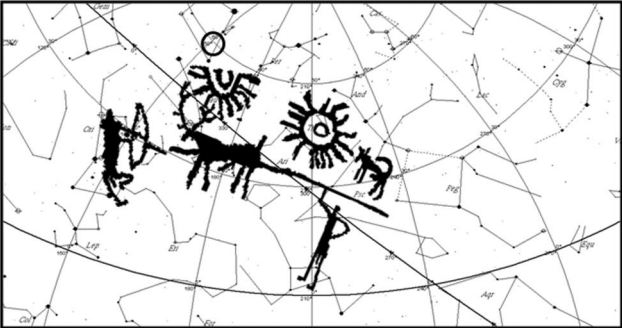
Recently discovered cave paintings and stone etchings in Kashmir dating back to almost 20,000 years have ignited new mystery surrounding the supernova that could have exploded.
It was believed by many that the oldest supernova or corpse of a star that exploded after running out of fuel had been captured in the rock carvings and the theory has been explained in a paper recently published in the Indian Journal of the History of Science.
Although it is difficult for archaeologists to date rock art than other forms of records, the rock carving found in Burzahama region in Kashmir, India, depicts what is believed to be a hunting scene with the presence of two bright objects in the sky. Researchers believe that one of the bright objects might represent the Sun or Moon and the other one might be a supernova.
In Burzahama, the oldest settlement dates back to 4325 BCE and the stone slab, which is about 48 cm by 27 cm, might be that old as well.
Supernovae had been observed centuries ago. The oldest example is that of a Chinese reference to a "guest star" that was observed in the sky in the year 185 AD. Before fading away, the star was reportedly stuck in the sky for eight months.

The carving was supposedly done before 2000 BC and was visible from Burzahama. The team of researchers went through the supernova catalogue to search for a supernova that might have had brightness similar to the Sun or the Moon and was spotted in the sky of that region between 2000 BC and 10,000 BC.
The team came across two options and believe that the two bright lights might represent HB9. This supernova dates back to 4,600 BC and its brightness was apparently close to that of the moon. Scientists believe the supernova exploded sometime between 5000 BC and 2000 BC. Speaking of the two bright objects in the sky, co-author Mayank Vahia, an astrophysicist at India's Tata Institute of Fundamental Research said, "You cannot have two suns in the sky," reports Newsweek.
There are a few records of pre-historic astronomical observations. Cave paintings and stone carvings are valuable records that help to keep a track of the important historical events. The Lascaux caves discovered in 1940 depict lunar ephemeris which happens to be 15,000 years old. Similar caves were discovered in Spain and France.








